





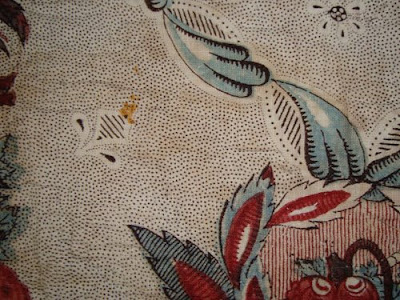
This is a small bed pelmet from the mid 1700s. I think it was probably one of a series of 4 or maybe 5 similar panels sewn together to form a surround for the top of a four poster bed. The method of piecing together several small panels would have most likely been for reasons of thrift, as all scraps of fabric could be pieced together like a jigsaw, not necessarily or usually matching! I assume this to be that thrift over-rode perfection, and the effect would have been much the same from a distance!
The pelmet is made from the softest linen, wadded lightly with sheep's fleece, and hand quilted onto a handloomed coarse linen backing. It has been block printed with natural dyes, with quite a limited palette. At this stage, green wasn't an easy dye to produce, so indigo was used to printthe blue, then yellow painted over to produce greens, unfortunately, the yellow in these ancient textiles has usually faded away as it wasn't a very stable dye, leaving the foliage rather too blue!
I no longer own this piece, but I thought I would share a bit about it here, as printed textiles of this period and a little later have recently begun to interest me emormously. I am attempting to research into the processes of production and the reasons for the consumption of such pieces, with a view to trying to understand more, not just about the textiles, but the people who bought and used them.
The pelmet is made from the softest linen, wadded lightly with sheep's fleece, and hand quilted onto a handloomed coarse linen backing. It has been block printed with natural dyes, with quite a limited palette. At this stage, green wasn't an easy dye to produce, so indigo was used to printthe blue, then yellow painted over to produce greens, unfortunately, the yellow in these ancient textiles has usually faded away as it wasn't a very stable dye, leaving the foliage rather too blue!
I no longer own this piece, but I thought I would share a bit about it here, as printed textiles of this period and a little later have recently begun to interest me emormously. I am attempting to research into the processes of production and the reasons for the consumption of such pieces, with a view to trying to understand more, not just about the textiles, but the people who bought and used them.

























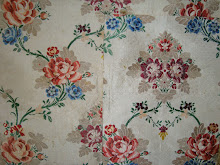





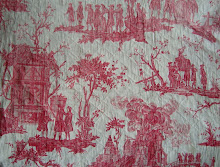
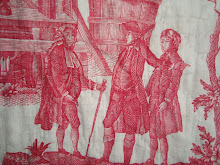




































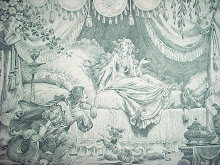







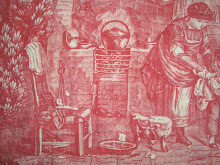





I had no idea about the way they got greens then, and it explains the prevalence of blue foliage. This is a great new blog, from someone who knows her textiles right from the roots up. I'll be back ... X
ReplyDeleteI am glad you like it, I want it to be quite interactive, with people sharing ideas! I only found out about the green dye last month, and like you was always confused by the blue foliage, especially with 19th century chinzes. I look forward to your valued contributions to the blog! xx
ReplyDeleteWhat a great piece this is! This time period for textiles was really so wonderful in so many ways and so fascinating. I really want to buy something from you because you have some of the most exquisite collection I have seen in some time.
ReplyDeleteWhen I realized you were studying these subjects I was quite excited as I will be posting a turkey red quilt soon and have been studying the complex dye process of madder. The French perfected it (of course!) and the English in Scotland. We will have to collaborate with our information and sources. I am really looking forward to this, and I love your new blog!
Thank you! I can't wait to see your post about the turkey red quilt, and I really look forward to reading your research. I don't know much about the historical proccess of madder dyeing, but about 14 years ago, I went through a phase of hand spinning, dying and weaving. Madder and indigo were my favourite things to use, I will dig out my old book of spinnin/dye samples, and maybe do a post at some point. I too can't wait to start comparing notes! Very excited!
ReplyDeleteWhat a wonderful blog...so much to learn, I googled pelmet,,found you! Wonder of wonders!
ReplyDeleteOn with reading and learning here.
Marcie